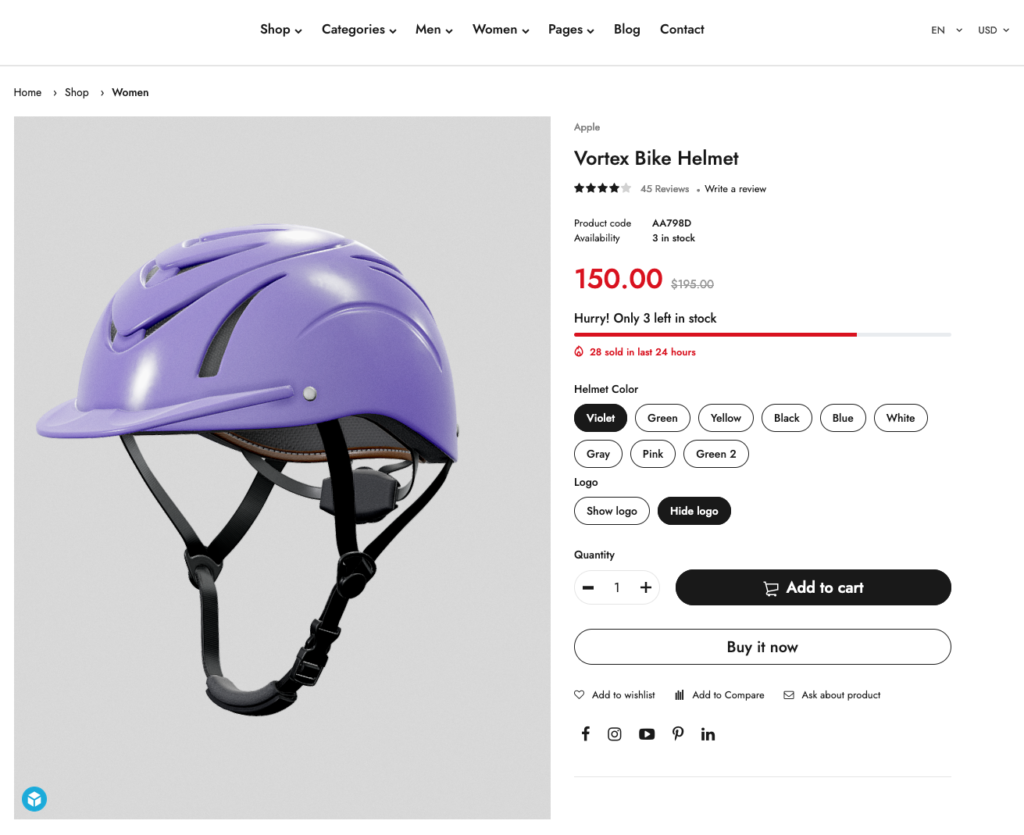In the rapidly evolving marketplace of ecommerce as well as digital retail, the ability to graphically represent products in a realistic, interactive manner has changed the game. This is particularly true for the furniture industry, where the feel, look and fit of the product are key elements in deciding on the purchase. The 3D Product Configurator is an innovative tool that has transformed the buying of furniture on the internet and in retail stores.

The rise of 3D Product Configurators
A 3D product configurator is a software which allows customers to look at and interact with the product from three angles. Contrary to static images that are static, a 3D product configurator lets users rotate, zoom in, and modify products in real-time. Furniture industry has become more well-known with this technology, which offers a more dynamic shopping experience.
Enhancing the Experience for Customers with Online Furniture Configurators
The superior customer experience furniture configurators offer is among the most significant advantages. Customers can personalize the colors, finishes and furnishings and view it from different angles. They can also visualize how their new furniture will look in their space. This interactive shopping experience can help to make the shopping experience more enjoyable and more knowledgeable.
The configurator for furniture from Virtenzo, for instance, lets users transform their online shopping experience by providing 3D-quality information. This level interaction helps make the transition from physical to online shopping, and makes customers feel more confident about their options.
3D Interactive Furniture Configurators for Furniture: Boosting Online Sales
3D product configurators can have an impact on sales online. Studies have shown that interactive 3D models can result in greater conversion rates and lower rate of return. If consumers can know exactly what they’re buying, they’ll be more likely the purchase.
A 3D configurator lets retailers to present a broad assortment of products without having to photograph and make each. This reduces presentation costs and creates an extensive catalog of options and can cater to a variety of customer preferences.
Immersive 3D configurators: The future of furniture shopping
As technology continues to develop as it does, the future of furniture shopping is sure to be shaped by 3D immersive configurators. These tools will become more sophisticated as they include features such as augmented reality (AR), virtual reality (VR), and other technologies to enhance the shopping experience.
Customers can, for instance make use of AR using their smartphones to look at a piece of furniture within their living space or VR to experience the virtual showroom in an environment that is lifelike. These innovations will make shopping more interactive and personalized.
Implementing 3D Product Configurators: A Guide for Furniture Makers
For furniture manufacturers and retailers, implementing a 3D product configurator can seem daunting. The benefits are greater than any obstacles. Here’s a step-bystep guide on how to get started:
Select the right platform Choose a 3D configurator system that matches your business requirements and objectives. Features such as the ability to customize, integrate and scale are crucial.
Digitize your objects: Create high-quality, 3D models of furniture items. This might involve hiring professionals to ensure accuracy and precision.
Integrate the Configurator with Your website. Partner with your website’s development team to integrate the configurator with your online store. Ensure it is mobile-friendly to accommodate users from every device.
Enhance with AR/VR: Consider adding AR or VR capabilities to give you a more immersive experience.
Marketing Your New Tool Advertise your 3D configurator through your channels for marketing. Also, you can provide instructional videos for your customers on how to use it.
Conclusion
The adoption of 3D product configurators is changing the way furniture manufacturers work and delivering unparalleled customer experiences and increasing sales. These tools let customers alter and interact with their products in real time, which bridges the gap between online shopping and store purchases. This makes the shopping process more enjoyable and informative. With the advancement of technology, AR and VR integration will transform the retail landscape. Experiences that are immersive in shopping will soon be the norm. It is clear that embracing this technology by furniture makers and retailers isn’t an option but rather is a requirement for them to remain competitive in a digital age.